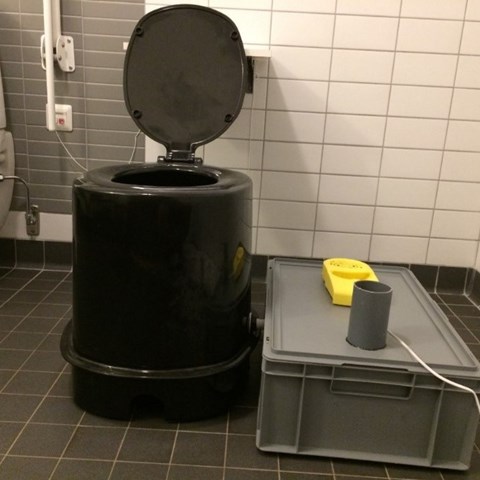Facts:
Productive On-site Sanitation System: New Value Chain for Urine Based Fertilizer started in 2015 and continues through 2018. The project is funded by The Swedish Research Council VR.

Over four billion people are discharging untreated human excreta into the environment without any prior treatment, causing eutrophication and spreading disease. This eutrophication is caused by nutrients found predominantly in urine. If managed adequately, urine can be used as a fertiliser because it contains the same plant nutrients as the fertilisers used to produce the food that people eat. Currently to replace the nutrients removed from fields during harvesting, more fertilisers are being manufactured and applied and ultimately more are being leached into the environment.
A limitation to universal sanitation coverage is that the infrastructure for collection, storage and treatment of human excreta is expensive and complex. Simpler systems, such as pit latrines, are being implemented but are often only used until they are full, as the emptying is unpleasant and expensive. If emptied, the waste is most often dumped into the environment without any treatment. The meagre sanitation conditions occurring in developing countries have been directly correlated as one of the leading causes of infant mortality, as well as impacting early cognitive and motor development and undermining educational achievement.
The overall purpose of this project is to develop a urine drying system for implementation in urine diverting toilets and urinals. The aim of the urine drying system is to provide an affordable urine treatment system where:
The specific objective is to develop and dimentionalize the urine treatment system for a household of 5 people consisting of:
In managing excreta, urine accounts for 88%, by volume, and therefore is challenging to store, process and dispose. Urine also contains valuable plant nutrients. Of the total excreted nutrients, urine contains 80-90% of the nitrogen, 50-80% of the phosphate and 80-90% of the potassium (Vinnerås, 2002), which can be utilized as fertilizer. The nutrient concentration is 0.6 0.06, 0.2% of N, P and K respectively. By removing the water it is possible to reach a dry product in a drying agent containing 20, 2, 6% of N, P and K respectively, this is comparable to a commercial fertiliser.
The assessment of design will include the effect of dehydration on pathogenic microorganisms and the optimization of the pathogen removal within the containers. The components will be developed and optimized in lab studies in Sweden and then followed up and the function will be tested in South Africa in existing urine diverting dry toilets, using the facilities of the Pollution research group at Universiy of Kwazulu Natal in Durban.
Productive On-site Sanitation System: New Value Chain for Urine Based Fertilizer started in 2015 and continues through 2018. The project is funded by The Swedish Research Council VR.